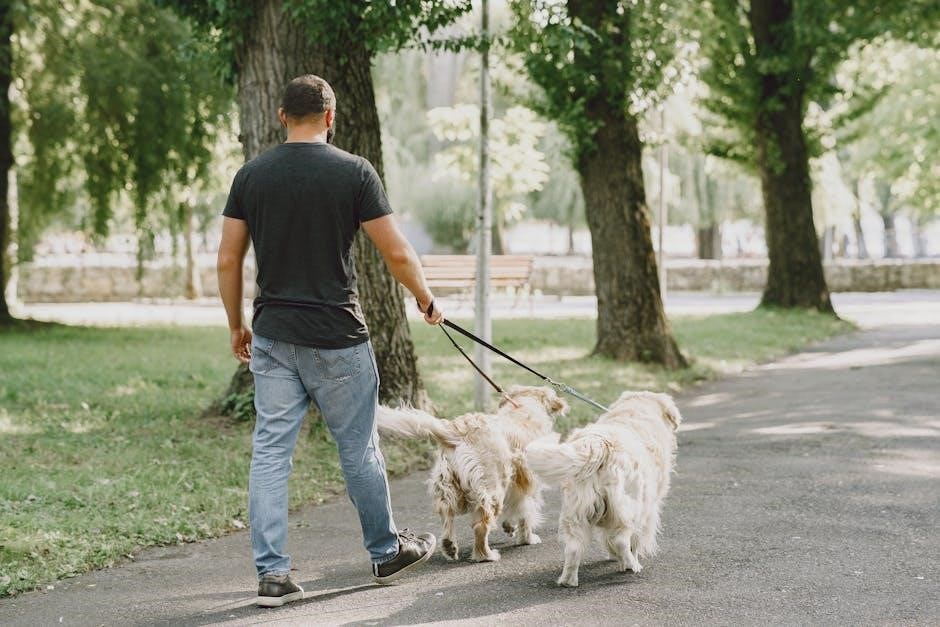Pedestrians Using Guide Dogs or White Canes: Understanding Right-of-Way Laws
This section aims to clarify the laws designed to protect pedestrians who are blind or visually impaired. These laws ensure safety and unimpeded passage for those using guide dogs or white canes in public spaces.
Right-of-way laws are crucial for protecting vulnerable pedestrians, particularly those with visual impairments who rely on white canes or guide dogs. These laws mandate that drivers yield to pedestrians using these aids, ensuring their safety when crossing streets or navigating public areas. A white cane or guide dog serves as a clear signal to drivers, indicating that the pedestrian may have limited visibility and requires extra consideration. Understanding and respecting these laws is paramount for creating a safe and inclusive environment for all members of the community. The historical context and evolution of these laws reflect a growing awareness of the rights and needs of individuals with disabilities. Compliance with right-of-way regulations not only prevents accidents but also promotes independence and confidence for pedestrians with visual impairments.
The Significance of White Canes and Guide Dogs
White canes and guide dogs are more than just tools; they are symbols of independence and mobility for individuals with visual impairments. A white cane serves as a visual indicator to others, alerting them to the pedestrian’s limited sight and the need for caution. It also acts as a tactile aid, allowing the user to detect obstacles and navigate their surroundings with greater confidence. Guide dogs, on the other hand, are highly trained service animals that provide not only physical guidance but also companionship and emotional support. They are adept at avoiding obstacles, navigating traffic, and ensuring the safety of their handlers. The presence of either a white cane or a guide dog signifies the pedestrian’s right-of-way and the driver’s responsibility to yield and take necessary precautions. Recognizing the significance of these aids fosters a culture of respect and inclusivity for individuals with visual impairments.
Legal Framework and Driver Responsibilities
This section outlines the legal obligations drivers have towards pedestrians using white canes or guide dogs. It emphasizes the importance of yielding the right-of-way and taking precautions to prevent accidents.
State Laws and Regulations Concerning White Canes and Guide Dogs
State laws across the United States provide specific protections for pedestrians who are blind or visually impaired and utilize white canes or guide dogs. These laws are designed to ensure their safety and grant them the right-of-way in various situations, such as crossing streets and navigating public areas.
Many states have enacted “White Cane Laws,” which mandate that drivers exercise caution and yield to pedestrians carrying a white cane, often with a red tip, or accompanied by a guide dog. These laws recognize that these individuals may have limited visibility and require extra consideration from motorists.
The specifics of these laws can vary from state to state, including the penalties for violations, but the core principle remains consistent: prioritizing the safety and accessibility of pedestrians with visual impairments.
Driver’s Duty of Care: Precautions and Actions Required
Drivers have a significant duty of care when encountering pedestrians with guide dogs or white canes. This duty goes beyond simply obeying traffic laws; it requires proactive measures to ensure the safety of these vulnerable individuals. Approaching these pedestrians demands heightened awareness and caution.
Drivers should slow down, be prepared to stop, and yield the right-of-way, even if the pedestrian is not in a marked crosswalk. Avoid sudden movements or loud noises that could startle the guide dog or disorient the pedestrian. Never honk your horn unnecessarily or block a crosswalk.
Patience is crucial. Allow ample time for the pedestrian to cross safely, as they may require extra time. By taking these precautions, drivers can significantly reduce the risk of accidents and create a safer environment for all.
Penalties for Violating Right-of-Way Laws
Violating right-of-way laws concerning pedestrians with guide dogs or white canes carries significant consequences. These penalties are in place to deter negligent behavior and protect vulnerable individuals. The severity of the penalties can vary depending on the jurisdiction and the specific circumstances of the violation.
Generally, penalties may include fines, points on the driver’s license, and mandatory driver education courses. In more severe cases, such as when a violation results in injury or death, criminal charges may be filed, leading to imprisonment. Furthermore, drivers may face civil lawsuits from the injured pedestrian, resulting in substantial financial liability.
It is imperative for drivers to understand and respect these laws to avoid legal repercussions and, more importantly, to ensure the safety and well-being of pedestrians with visual impairments. Ignorance of the law is not an excuse, and the potential consequences can be life-altering.
Understanding White Cane Laws
White Cane Laws grant specific rights and protections to pedestrians who are blind. These laws ensure drivers yield the right-of-way, promoting safety and independence for visually impaired individuals.
Historical Context and Evolution of White Cane Laws
The White Cane Law’s history reflects a growing societal awareness of the challenges faced by blind pedestrians. Initially, the white cane simply served as a visual aid, helping individuals navigate their surroundings. Over time, advocates recognized the need for legal protections to ensure safety and equal access.
The first White Cane Law was enacted to give pedestrians using white canes the right-of-way. As understanding evolved, these laws expanded, with penalties being introduced for drivers who failed to yield. These laws promote inclusion and recognize the rights of pedestrians who are blind or partially sighted. The evolution continues as societies strive for greater accessibility.
Purpose of White Cane Laws: Protecting Vulnerable Pedestrians
The primary purpose of White Cane Laws is to protect vulnerable pedestrians, specifically those who are blind or have low vision. These laws recognize that individuals using white canes or guide dogs face increased risks while navigating public streets and intersections. By granting these pedestrians the right-of-way, the laws aim to reduce the likelihood of accidents and injuries.
White Cane Laws also serve to educate the public about the needs and rights of blind pedestrians, promoting a more inclusive and considerate society. Drivers must exercise caution and yield to pedestrians with white canes or guide dogs. These laws foster independence and confidence for visually impaired individuals, enabling them to participate more fully in community life.

Best Practices for Drivers and Pedestrians
This section outlines crucial dos and don’ts for drivers and pedestrians when encountering individuals using guide dogs or white canes. It emphasizes ensuring safety and unimpeded passage for vulnerable pedestrians.
Dos and Don’ts When Encountering Pedestrians with Guide Dogs or White Canes
Dos: Always yield the right-of-way to pedestrians using white canes or guide dogs. Be patient; they may need extra time to cross. Come to a complete stop and avoid blocking crosswalks. Be aware of the surroundings and anticipate their movements. Offer assistance if needed, but only if requested. Speak directly to the person, not the dog.
Don’ts: Do not distract the guide dog; avoid making noises or gestures that could confuse it. Never assume the person sees you; always make your presence known. Do not rush or pressure them to cross quickly. Avoid parking in crosswalks or on sidewalks, obstructing their path. It’s important to understand the laws and be respectful to people with impaired vision who are crossing the street.
Ensuring Safety and Unimpeded Passage
To ensure the safety and unimpeded passage of pedestrians with guide dogs or white canes, drivers must be vigilant and proactive. This involves understanding their right-of-way and adhering to specific precautions. Drivers should always yield, coming to a complete stop when necessary, and maintain a safe distance. It’s also crucial to avoid any actions that could startle or distract guide dogs, such as honking or making sudden movements.
Creating a safe environment requires awareness and respect for the challenges faced by visually impaired individuals. By consistently prioritizing their safety, we contribute to a more inclusive and accessible community. Furthermore, responsible parking and clear signage play a vital role in maintaining accessible pathways.

The Role of Guide Dogs
Guide dogs are indispensable partners for visually impaired individuals, providing mobility and independence. Their training equips them to navigate obstacles, ensuring the safe passage of their handlers in various environments.
Training and Functionality of Guide Dogs
The rigorous training of guide dogs is a multi-stage process, beginning with selection based on temperament and health. These dogs undergo extensive training in obedience, navigation, and obstacle avoidance. They learn to respond to specific commands, enabling them to guide their handlers safely through various environments.
Guide dogs are taught to stop at curbs, avoid obstacles, and navigate traffic, always prioritizing their handler’s safety. Their training also includes ignoring distractions such as food or other animals, maintaining focus on their task. Regular reinforcement and ongoing training ensure the dog’s skills remain sharp and reliable.
The bond between a guide dog and its handler is crucial, built on trust and mutual understanding, enhancing their ability to work together effectively.
Guide Dogs as Specialized Service Animals
Guide dogs are classified as specialized service animals, recognized for their crucial role in assisting individuals with visual impairments. They are more than just pets; they are working partners trained to perform specific tasks that mitigate the challenges faced by their handlers.
Legally, guide dogs are granted access to public spaces where animals are typically prohibited, ensuring their handlers can participate fully in society. This access is protected by laws such as the Americans with Disabilities Act (ADA). Businesses and organizations must accommodate guide dogs, recognizing their essential function.
The presence of a guide dog signifies the handler’s reliance on the animal for safe navigation and independence. Understanding and respecting the role of guide dogs is vital for fostering an inclusive environment for individuals with visual impairments, and it is an important aspect that society must be aware of.

Tactile Paving and Other Aids
Tactile paving and auditory signals are crucial aids that help blind pedestrians navigate streets safely. These measures offer vital environmental cues, assisting individuals with visual impairments in maintaining independence.
Local Council Measures to Assist Blind Pedestrians
Local councils implement various measures to enhance the safety and accessibility for blind pedestrians. These initiatives include installing tactile paving at crosswalks, which provides a detectable warning surface to indicate the transition from sidewalk to street. Audible traffic signals are also deployed, emitting sounds that help pedestrians determine when it is safe to cross. Councils ensure that street furniture, such as benches and signs, are positioned to avoid obstructing pedestrian pathways. Furthermore, regular maintenance of sidewalks and pathways is conducted to remove hazards, such as cracks or uneven surfaces.
Community awareness programs educate the public on how to interact safely with blind pedestrians, promoting a more inclusive environment. These combined efforts create a safer and more navigable environment for individuals with visual impairments, enabling them to move through the community with greater confidence and independence.
The Importance of Tactile Paving
Tactile paving, also known as detectable warning surfaces or truncated domes, plays a crucial role in enhancing the safety and independence of pedestrians with visual impairments. These textured ground surface indicators are designed to provide a tactile cue, alerting individuals to upcoming hazards or changes in the pedestrian environment. Typically found at crosswalks, railway platforms, and other potentially dangerous locations, tactile paving allows blind or partially sighted individuals to anticipate and navigate these areas with greater confidence.
The raised patterns provide a clear signal underfoot, warning of approaching traffic or drop-offs. The consistent design of tactile paving across different locations ensures that pedestrians can easily recognize and interpret the warning, regardless of where they are. The presence of tactile paving significantly reduces the risk of accidents and promotes accessibility.

White Cane Safety Day
White Cane Safety Day, observed annually, serves as a crucial platform for raising public awareness about the rights and needs of pedestrians who are blind or visually impaired. This day emphasizes the significance of the white cane as a tool for independence and mobility, as well as the importance of respecting the right-of-way laws that protect these individuals.
The observance provides an opportunity to educate drivers and the general public about how to interact safely with pedestrians using white canes or guide dogs. Events often include demonstrations, workshops, and public service announcements aimed at promoting understanding and fostering a more inclusive environment. By recognizing White Cane Safety Day, communities can reaffirm their commitment to ensuring the safety and well-being of all pedestrians.



